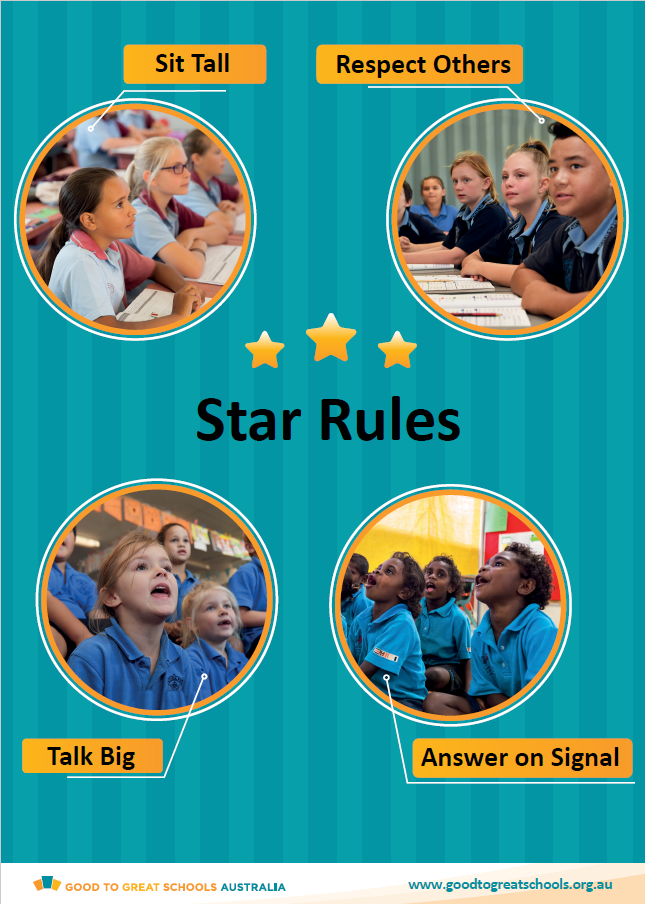Teach Connecting Math Concepts B (1-2)
-
Module Introduction5 Topics
-
Overview29 Topics|4 Tests
-
Cover
-
Lesson Objective
-
Opening the Lesson
-
Professional Learning Standards, Techniques and Practices
-
Direct Instruction Overview
-
Connecting Math Concepts B (CMC B) Overview
-
Oz-e-Maths Overview
-
Oz-e-Math Instruction Design
-
Video: CMC-B and Oz-e-Maths Introduction
-
CMC B Materials
-
Oz-e-Maths Program Components
-
Oz-e-Maths PowerPoint Lessons and Student Workbook
-
Check Your Understanding
-
Time Requirements
-
CMC B Placement Testing
-
Oz-e-Maths Assessment
-
Oz-e-Maths Mastery Test Procedure
-
Video: CMC B Placement Testing and Oz-e-Math Mastery Tests
-
Check Your Understanding
-
Grouping and Seating
-
Star Rules and Transitions
-
Video: Star Rules and Transitions
-
Script Features
-
Board Work
-
Check Your Understanding
-
Maths Learning Behaviours
-
Test Your Understanding
-
Review
-
Lesson Completed
-
Cover
-
Counting27 Topics|3 Tests
-
Cover
-
Lesson Objective
-
Opening the Lesson
-
Professional Learning Standards, Techniques and Practices
-
Counting Forward and Backward: Counting by Ones
-
Tapping Signal
-
Video: Counting and Tapping Signal
-
Count by Tens
-
Point–Touch Signal
-
Video: Point Touch Signal
-
Counting Backward by Ones
-
Mixed Counting
-
Check Your Understanding
-
Counting On
-
Adding Tens
-
Count by Twos and Fives
-
Counting by Hundreds (Forward and Backward by Hundreds)
-
Auditory Signal
-
Video: Counting and Auditory Signal
-
Check Your Understanding
-
Counting Exercises (Corrections)
-
Count-on Strategy
-
Ruler Skills
-
Repeat until Firm
-
Test Your Understanding
-
Review
-
Lesson Completed
-
Cover
-
Symbols and Place Value21 Topics|3 Tests
-
Cover
-
Lesson Objective
-
Opening the Lesson
-
Professional Learning Standards Techniques, and Practices
-
Symbol Identification
-
Reading Numbers
-
Writing Numbers
-
Error Correction and Repeat Until Firm
-
Video: Writing Two-part Numbers Lesson 16, Exercise 11
-
Check Your Understanding
-
Place Value
-
Progression of Place Value (Addition Equations)
-
Spoken and Written Error Corrections
-
Video: Place Value Addition, Lesson 16, Exercise 1
-
Individual Turns
-
Individual Turns (Remedies)
-
Video: Reading 3-digit Numbers Lesson 16, Exercise 4
-
Check Your Understanding
-
Test Your Understanding
-
Review
-
Lesson Completed
-
Cover
-
Number Families23 Topics|3 Tests
-
Cover
-
Lesson Objective
-
Opening the Lesson
-
Professional Learning Standards, Techniques, and Practices
-
Number Families
-
Number Family Strategy
-
Number Family Corrections
-
Videos: Number Families and Correcting Errors
-
Number Families – Addition
-
Number Families – Subtraction
-
Check Your Understanding
-
Addition/ Subtraction (Facts)
-
Addition and Subtraction Facts (Continued)
-
Number Family Table
-
Video: Addition/Subtraction Facts
-
Cycle for Teaching Number Families
-
Fact Relationships
-
Using Number Families to Solve Problems
-
Check Your Understanding
-
The Tick
-
Test Your Understanding
-
Review
-
Lesson Completed!
-
Cover
-
Column Addition and Subtraction17 Topics|2 Tests
-
Cover
-
Lesson Objective
-
Opening the Lesson
-
Professional Learning Standards, Techniques and Practices
-
Column Addition and Subtraction
-
Types of Addition Problems in CMC-B
-
Lesson Progression – Column Addition and Subtraction
-
Three Addends
-
Lesson Progression – Column Addition and Subtraction (continued)
-
Check Your Understanding
-
Correcting Errors on Column Addition and Subtraction Problems
-
Standard Correction Procedure for Connecting Math Concepts
-
Video: Correcting Errors in CMC-B
-
Droning Errors
-
Test Your Understanding
-
Review
-
Lesson Completed!
-
Cover
-
Word Problems16 Topics|2 Tests
-
C
-
Lesson Objective
-
Opening the Lesson
-
Professional Learning Standards, Techniques, and Practices
-
Word Problems in CMC-B
-
Lesson Progression of Comparison Word Problems
-
Word Problems – Teaching Tips
-
Correcting Errors on Word Problems
-
Check Your Understanding
-
Point-Touch Signal
-
Video: Point-Touch Signal
-
Script Success
-
Video: Structured Script Practise
-
Test Your Understanding
-
Review
-
Lesson Completed!
-
C
-
Fractions, More Than, Less Than and Equal to16 Topics|2 Tests
-
C
-
Lesson Objective
-
Opening the Lesson
-
Professional Learning Standards, Techniques and Practices
-
Introducing Fractions
-
Scope and Sequence
-
Progression of the Fractions Track
-
Lesson 122, Exercise 5
-
Check Your Understanding
-
More Than, Less Than, Equals
-
Teaching Tips for Using Less Than and Greater Than Symbols
-
Video: Teaching Lesson 89, Exercise 7
-
Correction Procedures
-
Test Your Understanding
-
Review
-
Lesson Completed!
-
C
-
Time, Money and Geometry20 Topics|3 Tests
-
C
-
Lesson Objective
-
Opening the Lesson
-
Professional Learning Standards, Techniques and Practices
-
Time Track – Reading Digital Time
-
Time Track – Writing Digital Time
-
Time Track – Analog Time
-
Time Track – Analog Time Continued
-
Check Your Understanding
-
Observing and Providing Feedback to Students
-
Basic Rules for Observing and Providing Feedback
-
Video: Observe and Provide Feedback
-
Money Track
-
Check Your Understanding
-
Geometry Track
-
Geometry Track Continued
-
Video: Lesson 76, Exercise 5
-
Test Your Understanding
-
Review
-
Lesson Completed!
-
C
-
Motivating Students and Independent Work21 Topics|2 Tests
-
C
-
Lesson Objective
-
Opening the Lesson
-
Professional Learning Standards, Techniques and Practices
-
Effective Teaching
-
Motivating and Engaging Students
-
Teach Behavioural Expectations
-
STAR Rules
-
Teacher-Student Game
-
Video: Teacher-Student Game
-
Specific Positive Feedback
-
Check Your Understanding
-
Affirmations
-
Independent Work
-
Independent Work Expectations
-
Work Checks for Independent Work
-
Video: Correcting Independent Work
-
Independent Work Input on Student Progress Tool
-
Test Your Understanding
-
Review
-
Lesson Completed!
-
C
-
Mastery and Cumulative Tests19 Topics|2 Tests
-
Cover
-
Lesson Objective
-
Opening the Lesson
-
Professional Learning Standards, Techniques and Practices
-
Mastery Test Overview
-
Scoring a Mastery Test
-
Recording Mastery Test Scores
-
Providing Remedies
-
Video: Determining Who Needs Remediation
-
Check Your Understanding
-
Remedies on the Student Progress Tool
-
Mastery Tests on Student Progress Tool
-
Cumulative Test
-
Expected Lesson Pacing
-
Video: Pacing of Instruction
-
Transitions
-
Test Your Understanding
-
Review
-
Lesson Completed!
-
Cover
-
Module evaluation survey1 Topic
Participants 538
Star Rules and Transitions
ddewell@goodtogreatschools.org.au January 12, 2024

Star Rules and Transitions
Classroom learning rules set the tone for a positive learning environment. The STAR rules are most commonly used.
- Sit Tall
Feet on the floor, back against the chair, hands in lap.
- Talk Big
Answer in a normal voice, not a yell or a whisper.
- Answer on Signal
When the teacher gives a signal, students answer with the group.
- Respect Others
We are all here to learn, we all make mistakes sometimes.
The teacher posts the STAR rules in the immediate learning area, so they are visible to students during the lesson. The STAR rules are reinforced at the beginning of the school year with the group and before starting the lesson and elicit a choral read-aloud with them.

Students are awarded points frequently for following the STAR rules at the beginning of the school year. As students learn the rules, points become more academically focused.
The teacher establishes a routine for efficient transitions during the lesson and group rotations.
The ways to achieve smooth transitions are:
- Use a timer to provide an audible signal for switching groups.
- Clearly define each step of the transition, such as allocating twenty seconds for putting away materials once the timer goes off. At the end of twenty seconds, students should be standing by their chairs, ready to move to the next group.
- Create a signal for each step of the transition. It can be as simple as the teacher saying ‘one’ as students push in chairs and stand up, ‘two’ as students move to their chair in the next group, and ‘three’ as students sit down in their new group.
- Establish a classroom ‘traffic pattern’ for moving to each group.
- Set the expectation of walking feet and quiet voices during movement.

